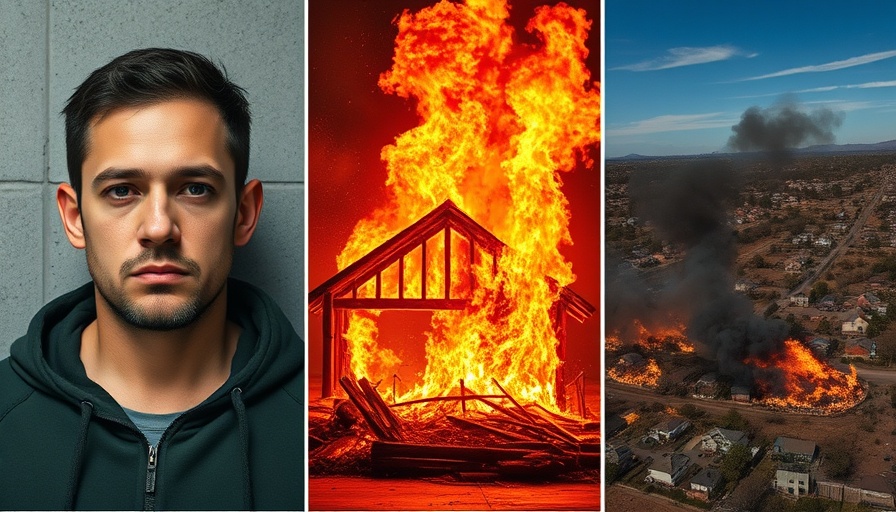
Alleged Arsonist Jonathan Rinderknecht Indicted in Devastating Palisades Fire
The landscape of Los Angeles was forever altered by the horrific Palisades Fire, which decimated homes, businesses, and tragically claimed 12 lives. Now, Jonathan Rinderknecht, the man accused of igniting this tragedy, faces serious legal consequences following his recent indictment by a federal grand jury. At only 29 years old, Rinderknecht's actions led to not only widespread destruction but also raised critical questions about fire safety and responsibility in urban-wildland interfaces.
The Charges Against Rinderknecht
Rinderknecht is charged with three counts: arson affecting property used in interstate commerce, destruction of property by means of fire, and timber set afire. The consequences could be severe; if convicted, he faces a minimum of five years in prison — though his sentence could stretch up to 45 years under federal law.
Federal prosecutors from the Department of Justice announced these charges after a thorough investigation linked him to the initial brush fire that ignited on January 1. This fire, dubbed the Lachman fire, eventually morphed into the catastrophic Palisades Fire due to its prolonged smoldering stage, which went unnoticed until strong Santa Ana winds revived it into a raging inferno on January 7.
The Mechanism of Ignition: A Crumbling Infrastructure
Investigators have pieced together a chilling narrative detailing how Rinderknecht allegedly started the Lachman fire while working as an Uber driver. The criminal complaint states he ignited dry vegetation using a lighter at the Skull Rock Trailhead shortly after the midnight hour on New Year’s Day.
Despite the quick response from firefighters, the fire was not fully extinguished. Instead, it smoldered under layers of dense vegetation for several days, demonstrating a critical flaw in how brush fires are managed—highlighting the need for systemic reforms to combat fire risks in these areas.
A Deeper Look: Why This Case Matters
The Palisades Fire is not just a local tragedy; it is a spotlight on a national problem regarding urban-wildfire interfaces. As cities expand into wilderness areas, the risks associated with wildfire ignitions increase. Rinderknecht's indictment also raises concerns about human behavior related to fire risks. Understanding why individuals might engage in reckless or malicious behavior can be critical in formulating preventative measures.
Additionally, Rinderknecht's alleged chat logs with an AI chatbot raise eyebrows. He reportedly created alarming images and asks about the potential of a cigarette igniting a fire, showcasing the disconcerting intersection of technology and dangerous curiosity. This instance begs a broader conversation about responsibility and the role of digital platforms in preventing dangerous behavior.
The Human Toll: Survivors and Community Impact
As we process these charges against Rinderknecht, it’s essential to recognize the profound human loss associated with the Palisades Fire. Families were displaced, lives were shattered, and the emotional scars from such a disaster can linger long after the flames have been extinguished. Community members and families affected are now left to pick up the pieces while grappling with the trauma and devastation.
What Lies Ahead: Legal Implications and Community Recovery
As Rinderknecht awaits his trial, scheduled to be held in Los Angeles federal court, the question remains: what precedent does this case set for future wildfire management and accountability? Other potential arsonists may think twice in light of the serious consequences faced by Rinderknecht. The situation also prompts discussions on improved fire safety practices and regulations to mitigate future risks.
The Palisades Fire has amplified calls for better infrastructure to manage wildfires and increased funding for preventative measures. These recommendations aim to protect communities from the devastating impacts of wildfires, and ensuring better preparedness could save lives going forward.
The Final Word: A Call to Action
In the wake of such a tragic event, it is critical for us to raise awareness about fire safety and community resilience. Engaging in dialogue about fire prevention, urging local governments to implement stringent measures, and fostering community preparedness can help avert future disasters. This incident is a wake-up call; let’s mobilize efforts to safeguard our communities and ensure a protective framework for those living on the urban-wildland interface.
Take action today: educate yourself about fire safety, participate in local fire drills, and advocate for stronger environmental protections in your community.
 Add Element
Add Element  Add Row
Add Row 



Write A Comment